- Sir Ghillean Prance first visited the Amazon in 1963 as a budding botanist, going on to describe more than 200 plant species and becoming a leading expert on the rainforest’s flora.
- But his studies coincided with a period of massive deforestation, prompting him to turn his focus toward generating data that would help inform more sustainable practices.
- Devoutly religious, Prance says Christians have a duty of care for “the creation on which our future depends.”
- In this interview with Mongabay founder and CEO Rhett A. Butler, Prance calls the ongoing environmental crisis “a moral, religious and ethical one.”
The second half of the 20th century was a time of unprecedented change in the Amazon rainforest. The ecosystem was opened up by government road-building and colonization schemes in the 1970s and 1980s, unleashing a spasm of large-scale deforestation unlike anything seen in human history. But that period was also characterized by a great expansion in scientific research in the region, which greatly improved our understanding of the ecosystem and helped usher in an era that enabled the creation of numerous protected areas.
One of the foremost Amazon botanists to emerge during that period was Sir Ghillean Prance, a British scientist who first visited the region in 1963 when he joined a plant-collecting expedition to the Wilhelmina Mountains in Suriname as a postdoc at the New York Botanical Garden. Prance would eventually go on to become a leading expert on the flora of Earth’s largest rainforest, describing more than 200 species of plants. Along the way, the focus of his work shifted from documenting the flora of Amazonia to understanding its importance to the ecosystem as a whole.
“I set out as a botanist only interested in the plants, their interactions and ecology,” Prance told Mongabay. “Midway through my career the serious destruction of the Amazon began so I changed my emphasis much more towards economic botany, ethnobotany and conservation to help provide data towards sustainable living.”

After more than two decades at the New York Botanical Garden, Prance went on to serve as director of the prominent Royal Botanic Gardens, Kew, from 1988 to 1999. Prance received many accolades for his contributions to science, becoming a Fellow of the Royal Society in 1993, being knighted in 1995, winning the Victoria Medal of Honor in 1999, securing a Commander of the Order of the Southern Cross from the president of Brazil in 2000, and being awarded the Order of the Rising Sun, Gold Rays and Neck Ribbon by the government of Japan in 2012, among other honors.
Prance also has been actively involved in a range of conservation and philanthropic endeavors, including serving on boards and in leadership roles at the Eden Project in the U.K., the Amazon Charitable Trust, the Linnean Society of London, the U.S. National Tropical Botanical Garden, and the U.K. Wild Flower Society, among others.
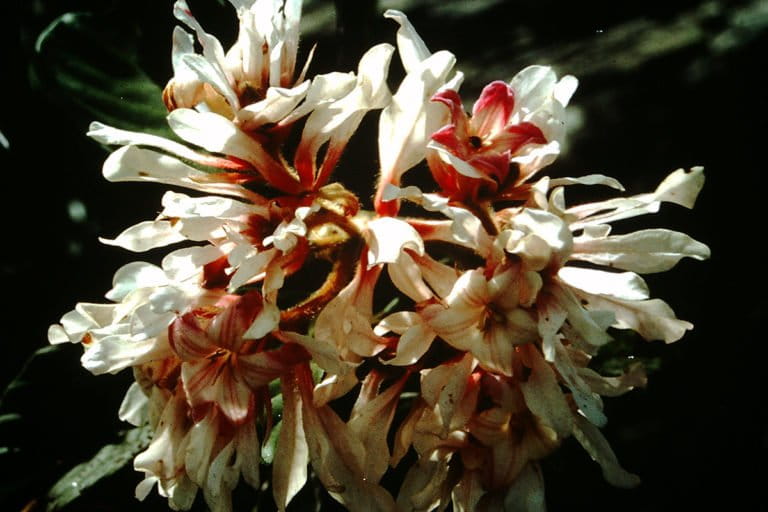
A devout Christian who was formerly chair of A Rocha, “an international network of environmental organizations with a Christian ethos,” Prance has been outspoken about Christians’ responsibility to protect biodiversity.
“The environmental crisis is a moral, religious and ethical one and so it [is] extremely important to have the church standing up for this,” Prance said. “One of my current goals is to increase the involvement of Christians in care of the creation on which our future depends.”
Prance spoke with Mongabay founder Rhett A. Butler during an October 2020 interview.
AN INTERVIEW WITH SIR GHILLEAN PRANCE
Rhett A. Butler for Mongabay: What inspired your interest in botany?
Prance: Growing up in rural areas in the Isle of Skye in Scotland and in the Cotswolds in England I became fascinated by natural history from a very young age. First, I was interested in everything living, collecting plants, insects, animal bones, fossils, etc., but gradually it moved towards plants. This was helped by two elderly aunts who were both keen amateur botanists. They taught me to use Latin names for plant species from the start.
Then I went to Malvern College for secondary education and was fortunate to be in the house in which the biology teacher was the Housemaster. Bill Wilson inspired me and several other the pupils to develop an interest in biology and took us out on many field trips.

Mongabay: How did you end up working in the Amazon?
Prance: Even as a boy I was interested in hunting for plants and the exploration side of biology. On graduation from Oxford in 1960 six of us organized a four-month botanical expedition to Turkey. I was heading towards doing a Ph.D. on a group of plants from Turkey, but during my undergraduate studies in Oxford I had done some work in the Forest herbarium, dissecting and drawing flowers of herbarium specimens from tropical Africa for one of the faculty. This led to an invitation to do a Ph.D. under Frank White, a specialist in the tropical African Flora. This seemed to me a more exciting project than the one on Turkish plants and so I embarked on the study of the African species of Parinari (Chrysobalanaceae).
I soon found that the African species of Parinari could not be studied without reference to the species of South America and Asia. This led to changing my thesis topic to a worldwide survey of the genera of Chrysobalanaceae. I found that three quarters of the species of the family occurred in the American tropics and so the logical follow-up was to study them in the field.
I was fortunate to get a post-doc at the New York Botanical Garden which began with three months joining an expedition to the Wilhelmina Mountains in Suriname. This took me into the rainforest as well as the opportunity to see ten species of Chrysobalanaceae in the field. After this expedition my decision was made I wanted to work in the rainforest. I was fortunate to have my post-doc extended for another year to go on two expeditions to Brazil and after that my job became permanent to study and collect the vegetation of Amazonia.
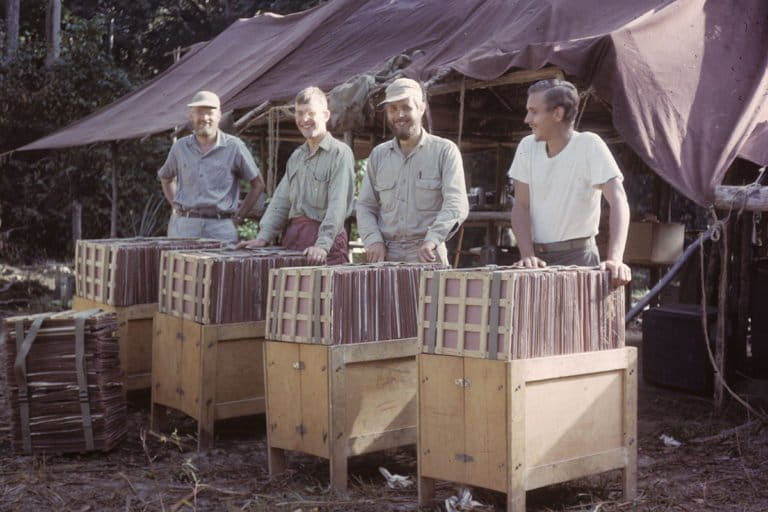
Mongabay: What was the purpose of your expeditions?
Prance: The purpose of my expeditions has always been scientific to document the Amazon flora, and more recently to use the data for conservation and sustainable use of the land. We collected 30,680 herbarium collection in sets of ten each where possible, and this resulted in the description of over 200 new species of plants as well as many publications on the taxonomy, ecology, ethnobotany and conservation of the Amazon region.
I set out as a botanist only interested in the plants, their interactions and ecology. Midway through my career the serious destruction of the Amazon began so I changed my emphasis much more towards economic botany, ethnobotany and conservation to help provide data towards sustainable living.
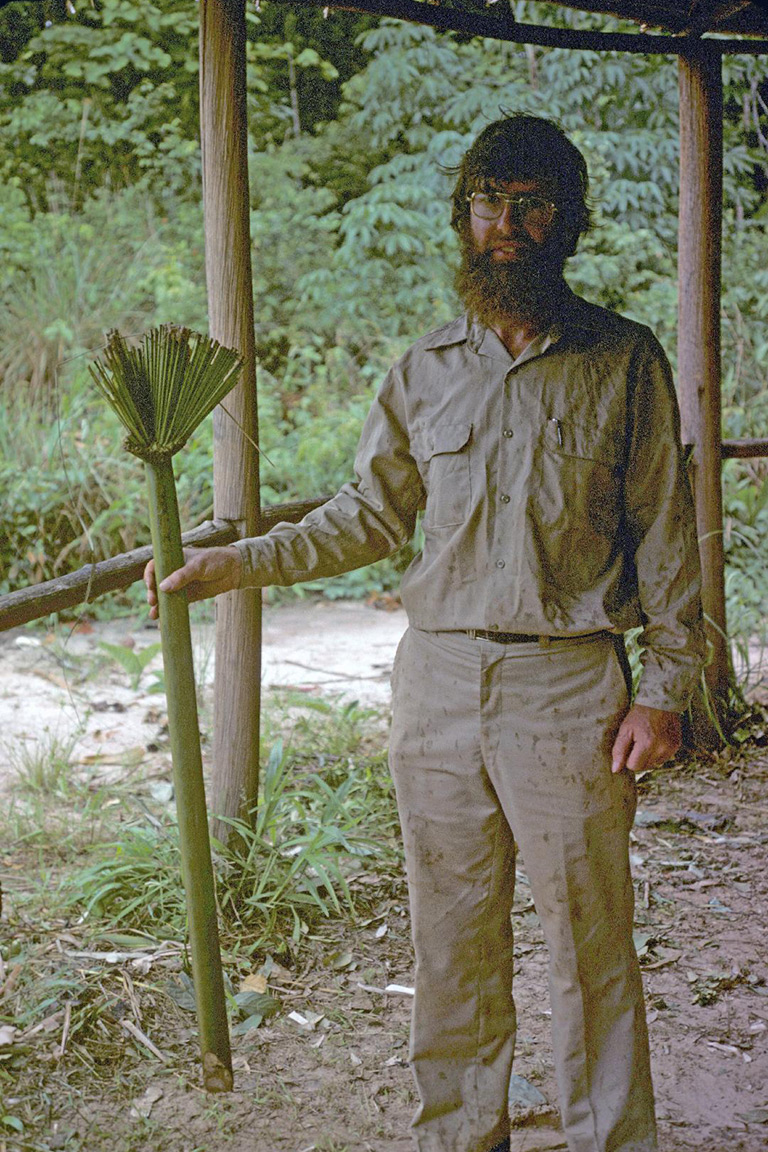
Mongabay: You’ve had an incredibly distinguished career, winning many accolades and honors. What achievement would you say you are most proud of?
This is a difficult one, but I think it was definitely becoming a Fellow of the Royal Society (FRS), the scientific academy of the United Kingdom. I was also very touched to receive high honors from the two countries with which I have had much scientific co-operation, The Comendador do Ordem Nacional do Cruzeiro do Sul from Brazil in 2000 (received at the same time as John Hemming) and the Order of the Rising Sun, Gold Rays and Neck Ribbon from Japan in 2012.
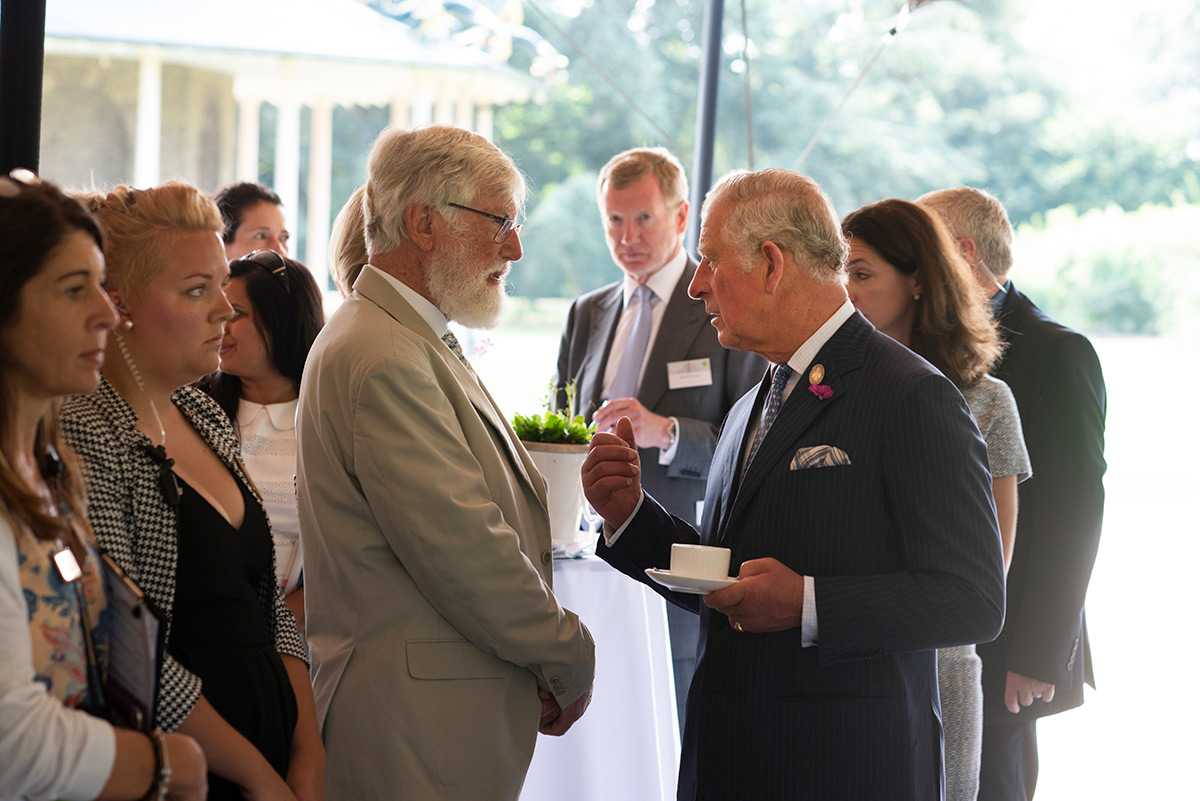
Mongabay: One of the areas of research you’re best known for is describing pollination relationships in the Amazon. What are the bigger picture things we can learn from this work?
Prance: Pollination study is very important for many reasons. It shows how the different organisms in the forest are linked together in a web of interactions. It is essential to know about this for any crop plant, whether wild or cultivated.
Some of the most fascinating studies I have done are of pollination of the giant Amazon water lily by beetles and of the Brazil nut by orchid bees (Euglossinae). Both these plant species are well known to most Brazilian politicians and so I have had several opportunities in front of them to discuss and demonstrate the pollination of the Victoria water lily and the Brazil nut to show how the various organisms are connected together in a network of interactions.
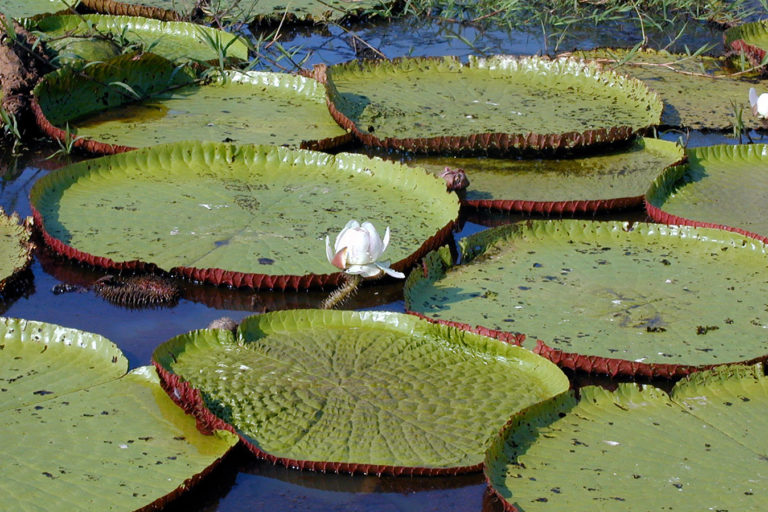
To get a harvest of Brazil nuts from the forest you need large Euglossine bees to take the pollen from one tree to another, and the male bees depend on the orchids in the forest to gather the scent to attract female bees for mating. The Brazil nuts are dispersed when the large case containing the nuts falls from the trees and is opened by agoutis. The agoutis then bury the seed some distance from the trees. The seeds they forget are the ones that germinate to produce new Brazil nut trees.
Thus, to get the important crop of Brazil nuts it is not enough to conserve single trees. They need bees and orchids in the forest canopy and agoutis on the forest floor in order to flourish. This can be made into a strong argument for forest conservation.

Mongabay: Your field work in the Amazon has led to many adventures. Could you share a few of the highlights?
Prance: My expeditions have always been with a scientific purpose and one tries to avoid adventures to get on with the work rather than cause adventure to write about in a book, as some authors have done. So, in some ways I would not call these highlights!
However, when traveling to the such remote areas of Amazonia as I have, a few accidental adventures are impossible to avoid. In February 1971, after a month of hiking through the forest with nineteen Yanomami men we were relieved to arrive at the jungle airstrip after navigating the 250 km with an ordinary marching compass. The next day, our pilot came in as agreed and ferried the Indians back to where we had started from. He then returned home to Boa Vista to refuel and bring in the supplies for the next phase of the expedition. The next day a plane did come back as scheduled, but we noticed it was a different one. We were surprised because it did not circle the airstrip and review the situation before landing which our regular pilot always did. It came straight in and touched down on the soft outfly and the front wheel broke off and the plane skidded down the runway and into the forest. Fortunately, the cabin was intact, and no one was injured.

Our regular pilot was there, a bit shaken, and he quickly explained that his plane was grounded for an insurance reason and so to fulfill his promise he had come in the only other available plane in Boa Vista piloted by an air force coronel and bringing in two astronomers who were surveying all jungle airstrips. The plane was a write off and we were stranded with my team of five, two pilots and now two astronomers from Sao Paulo who had never been in the Amazon rainforest. It took a week to find another plane. Our pilot wished he had decided to transport our food supplies on the first flight and not the people. The result of this is that we spent a week living off the land as, according to plan, our food had run out on the day we reached the airstrip.
The astronomers had no jungle experience, but we assigned them to fishing. We sent them off with some worms to catch small fish as bait and then the larger ones they caught helped the food supply. The pilots and two of my team were assigned to extend the outfly of the airstrip and to repair the ruts caused by the plane. Meanwhile the two parabotanists and I spent the time searching for edible plants. We were fortunate to find a group of peach palms on the site of a former Indian village. We lived on a staple of peach palms, which was highly acceptable on the first two days, but less so as the week progressed. It was many years before I really enjoyed eating peach palm fruits again.
Another adventure occurred on the Rio Urubu as we were descending a rapid in a dugout canoe. We had a local pilot on board, and I was driving the outboard motor. The pilot signaled to me the route to take around the rocks and as I followed his instruction one of my field team was frantically pointing in another direction. I followed the local expert and went straight into a rock which split the canoe in two. I was relieved at the bottom of the rapid to count that all six people made it through alive and well after being carried down to the pool below. It was many years later after I became director of the Royal Botanic Gardens, Kew that I encountered botanist Dave Philcox who had been a member of that expedition. He called me to his office to show me something. It was the bow piece of the canoe that he had taken as a souvenir of that adventure.

The worst adventure for me took place in July 1971 and this was a long one. Our expedition plan was to ascend tributaries of the Purus River as far as was possible with our three inflatable boats and a team of nine and from where we could no longer ascend the Purus river basin to portage across to the Madeira river and descend downriver back to Manaus. After two days ascending the Rio Curuquetê and portaging over two rapids it was apparent that one of my team, Alan, a graduate student was very sick. I decided to send him back with three of the team including the best boatman. The rest of us, the remaining five of my team and a local guide continued on upriver. The next two days was a constant struggle through rapids and low water, and it was by then that I was beginning to feel quite ill. The last day on the river was a difficult one for me driving a boat and having to constantly lift up the heavy motor to avoid logs and rocks in the river and on top of that feeling quite unwell. The following day as some of the team cleared a way up a further small creek, I had a fever and felt awful, so I stayed in camp with David Campbell who stayed there to help me. The next day instead of staying put to collect plants as planned we thought that we had better proceed quickly as far as we could up the last navigable stream, the Igarapé São Bento. We were able to travel up this stream for a further six hours until we decided that we had reached the end of navigable river. I had a fever and was vomiting so I was not much use to the team that day and just lay down while they built our final camp.
The next morning, we made the decision that I should get out of this remote area as soon as possible so our local guide Sebastião, who claimed to know the way to the nearest house at Morada Nova, Walfir, one of my field assistants and I set out on foot. Sebastião told us that the house was a three-hour walk and that from there I could get a mule, so I felt that I might just be able to endure that. We set out at 7.40 a.m. After two hours I realized that the walk might be longer when Sebastião remarked confidently that we had now done the first hour of the journey.

Later we reached a place where Brazil nut gatherers had worked. When we came to this same place a second time after another four hours, I realized that we were lost. Later we rediscovered the trail and after another hour I was feeling terrible and just could not go any further. My companions strung up a hammock between two trees and made tea for me. I had an hour of sleep and when I woke up I knew that I must continue however bad I was feeling. My diary then reads:
-
After the rest I felt able to drag myself forward and so we went on. After another hour I began to feel terribly weak with fever and for not eating for the last four days. I now had to sit down and rest every ten minutes. When at 5 p.m. we still did not appear to be near at a rest stop I prayed for strength to walk faster. I got up feeling better and we were able to walk for the last hour at a normal fast walking pace. When we arrived at 6 p.m. I just collapsed into my hammock. I was able to hold down a lemonade and tea but no food. Our host here Sr. Manoel was very kind and considerate to me.”
I had made it this far to a place with a well-known track ahead, but alas, there were no mules there. They were away at the other end of the trail so I would have to walk again the next day. Sebastião and a man from Morada Nova went back to the rest of the expedition to cut a trail for the mules to fetch out our boats and equipment as we had originally planned. Sr. Manoel left early to go to the road at the end of the trail to get a mule for me as quickly as possible. I felt a bit better as I rested at Morada Nova, but Walfir was now feeling very sick.

The next day I again felt much worse but was cheered up by the return of Sr. Manoel with a mule. The following day, I felt much better after sweating out the fever during the night so at 7 a.m. we set out towards rescue, with me on the mule and Walfir walking. After two hours like this Walfir announced that he could not go any further and lay down on the forest floor and refused to move. I struggled to get him onto the mule and we now proceeded with me walking and Walfir riding. Further adventure! When it was my turn to ride as we went down a steep riverbank to ford a stream the mule slipped and fell. I jumped off in time and landed in the middle of the stream and was soaked. By evening after several rest stops, in which I strung up my hammock to sweat out the fever, we reached the halfway point of the trail and were welcomed to stay in a small house.
We departed at 7 a.m. with Walfir riding and me walking. I was feeling better and no longer dizzy, but I was still very weak. Progress was slow as I had to stop and lie down frequently. I know that my faith and prayers helped me through this ordeal. I would lie down and think ‘I just can’t go any further’ and then I realized that if I did not continue there was no help. It is amazing what you can make yourself do under such extreme situations. The very dizzy Walfir could not even stay on the mule and I had to take my belt and the reigns to tie him on. At least it was an unusually obedient mule and we got on all right without the reigns. We arrived at our destination, near to the town of Abunã, and found the three team members, who we had sent back to Manaus with the sick Alan, waiting there for the continuation of the expedition down the Madeira River. However, Bill and José were by now also quite sick with malaria. In spite of expedition members taking three different malaria prophylactics, that our respective doctors had advised, we all had malaria. Only student David Woolcott escaped. His mother had told him to take garlic tablets each day to repel malaria mosquitoes and evidently it had worked better than our anti-malaria medicines.
I went on by bus to stay with missionary friend, Paul Bellington, in Porto Velho hopefully to recuperate and rejoin the expedition. When Paul saw me, he said, “no such thing, you are going directly to Manaus on the next plane” and so he bundled me off the next day. When I arrived in Manaus on a Sunday and the doctors were all away at the beaches and clubs, so my wife called for help from our missionary friend Fred Orr, who was in Manaus for a visit. Guessing what might be wrong with me, Fred came armed with a scalpel and a microscope slide which he had picked up at a hospital on his way to our house. He took a sample of my blood from my finger and an hour later returned and said he was glad to announce that I had falciperum malaria but at a very high level (quatro cruzes or four crosses). He was glad because he knew how to start the treatment immediately without any further consultation with doctors and I am happy to say that it worked. I was extremely lucky to survive with malignant tertiary malaria brooding in my body untreated for ten days.
Mongabay: You’ve had the opportunity to live and engage with a number of Indigenous tribes in the Amazon. What did you learn from them?
Prance: I have been most fortunate to visit and work with ten different indigenous tribes of the Amazon region. It was finding remote areas to study the plants that took me to tribal lands in the first place, but soon I became interested in their lifestyle and the plants that they use in so many different ways. I learned that it is possible to live in the forest without any need for the artifacts of western civilization. The forest provides their houses, food, medicines, clothing, bows and blowguns with poisoned arrows, fish poisons to stun fish, many different narcotics to enhance their spiritual lives, body paints and dyes.
It has been fascinating to study and document many of these uses of plant material, but the most interesting fact is that they have not destroyed the forest. The small areas of forest that they do cut down to grow their crops, quickly regenerate.
I am impressed as I map the distribution of plant species over the Amazon Basin that the areas with the most intact forest are those that are reserves for the indigenous peoples. The main lesson that I have learned is that conservation of the rainforest and the protection of indigenous peoples belong together. One cannot consider forest conservation without including its native inhabitants in any policy and action.


Mongabay: You’ve lived all over the world. How did you come to live on the Jurassic Coast?
Prance: I promised my wife Anne that when I “retired” we would live by the seaside which she has always enjoyed so much. We started searching along the South coast of England and soon found the ideal house in Lyme Regis because a botanist friend who lives there had sent us a brochure. For me it is a pleasant place to live and to carry on with my research (and travel before Covid-19). I am also delighted that as a result one of my grandchildren has become an enthusiastic collector of fossils along the Jurassic Coast. He has even set up his own museum of fossils.
Mongabay: What prompted you to get involved with the Eden Project?
When the founders of the Eden Project had decided that the goal was to build the world’s largest enclosed rainforest, they decided they needed advice from a rainforest expert. As a result, Tim Smit, one of the founders, and the two horticulturists who he had also interested in the project turned up at my office at Kew with a maquette of the proposed project to build this ambitious undertaking in an old China-clay mine in Cornwall. They asked me for my help.
To me this was an exciting, ambitious and visionary project that had to happen, so I enthusiastically joined their development team. When I discussed it with the Chairman of the Trustees of Kew he said that this was a crazy idea that would never succeed, and I should not associate myself with it. I am really glad that I ignored this advice and helped the Eden Project at weekends and in vacation time from my job at Kew to avoid any conflict.
And look what has happened! the Eden Project brings a million visitors a year to remote Cornwall to learn about the importance of plants to people and sustainable living, and it has revived the whole economy of what was previously a rather abandoned and neglected region of the UK.
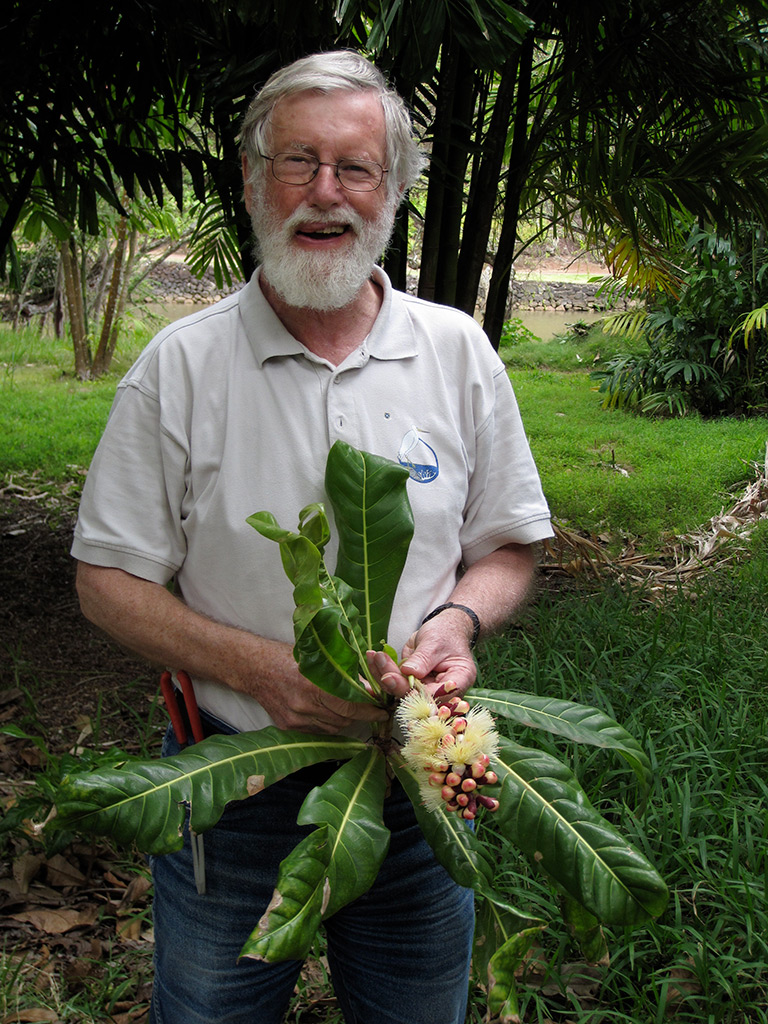
I love crazy and ambitious projects and my association with the Biosphere 2 in Arizona and the Eden Project in Cornwall are two of the most enjoyable undertakings of my life, and both have involved the creation and interpretation of my beloved rainforest.
Mongabay: You write about how your faith has influenced your work and belief that biodiversity should be protected. You also make a strong case that Christians have a responsibility to steward God’s creation: the natural wonders of the world. How has that argument been received by your scientific colleagues as well as other people of faith?
Prance: I think my faith had in general been well accepted by my scientific colleagues. When speaking of my faith I have been carefully to that it is my opinion and that I am not representing any of the secular institutions I work for or with.
Strangely, initially there was greater criticism from some other faith groups, but this has reduced considerably as the church recognizes more the need for care of creation. The environmental crisis is a moral, religious and ethical one and so it extremely important to have the church standing up for this. I was particularly delighted with the Laudato si encyclical from Pope Francis. It was a message based on good science as well.
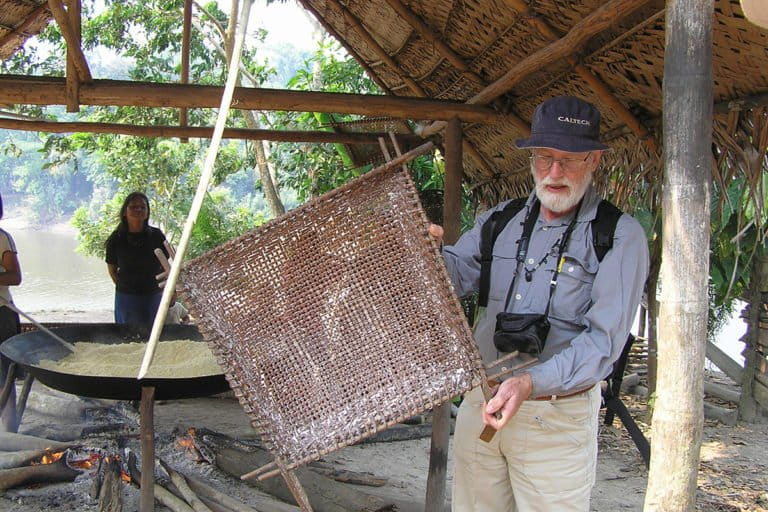
One of my current goals is to increase the involvement of Christians in care of the creation on which our future depends.
Mongabay: Conservation was once an issue that bridged political divides, but that seems less of the case now. Do you see opportunities for the environment to unify people? And if so, what aspects of conservation or environmental issues do you see as having the most potential to appeal to people across the political spectrum?
Prance: This is a difficult and somewhat disappointing area to address. I see that there is little will to bridge the national political divisions but increasing hope in some of the International efforts through the conventions on Climate Change and Biodiversity. I am worried that both conventions have now been around for a considerable time, but the situation of climate change and species extinction continues to get worse.

Unfortunately, I think that it will take increasing, and I think probable, serious environmental disasters to happen to bridge the political divide. To me there is more than enough evidence, but it is being ignored in too many places.
If some politicians believe in a six-day creation of the world and do not accept evolution there is little hope for the future. This is one reason why it important to have more liberal Christians involved in the church. I hope that the youth of the world will help here. I quite often speak to school audiences and I am asked some penetrating and good questions. The children are more concerned and knowledgeable than many of their parents. I am all for Greta and the Extinction Rebellion. May it continue to shake up the politicians.
One of the most worthwhile things I did in my whole career was in 1973-1975 to spend two years setting up the graduate education courses at the Instituto Nacional de Pesquisas da Amazonia (INPA) and the University of Amazonas in Manaus. The twelve initial master’s students all became enthused about the protection of the Amazon rainforest. The courses continue today and have now educated several hundred students in the biology and ecology of the region.
Mongabay: The news out of the Amazon the past five years has been pretty dire. What’s your outlook for the ecosystem?
Prance: I am really sad and distressed about the news I receive about the Amazon rainforest. It is indeed dire, and the situation is closely related to your last question. Brazil, the country with which I am most familiar, is governed by a president who is only interested in economic growth at all cost.
The outlook at present is grim however even in Brazil there are a lot of people who are concerned for the future of the Amazon rainforest. I fear that we are nearing the tipping point with enough deforestation to precipitate the whole Amazon region turning into savanna rather than rainforest.

v
I am also really worried for the indigenous peoples of the Amazon as Brazilian President Bolsonaro threatens to allow industries to occupy indigenous reserves, and the gold miners who invade these protected areas are not properly controlled by the government.
I thank Mongabay for so often drawing attention to what is happening to the Amazon and to its indigenous inhabitants. Please continue to give this as much publicity as possible.
Mongabay: What will it take to reverse the current trend and maintain the Amazon as a healthy and productive ecosystem?
Prance: Firstly, it will take political change.
We need to stop deforestation immediately and to reforest the destroyed areas with productive forest systems such as agroforestry. Build forest corridors between areas of forest that have already been isolated into small patches. The standing forest can be used for economic gain without clear felling.
We can all help to stop the trend of deforestation by boycotting the use of products that destroy the forest such as beef, soya, oil palm and unlicensed timber. We need to educate consumers to be selective and to look for fair trade and kite marked products.

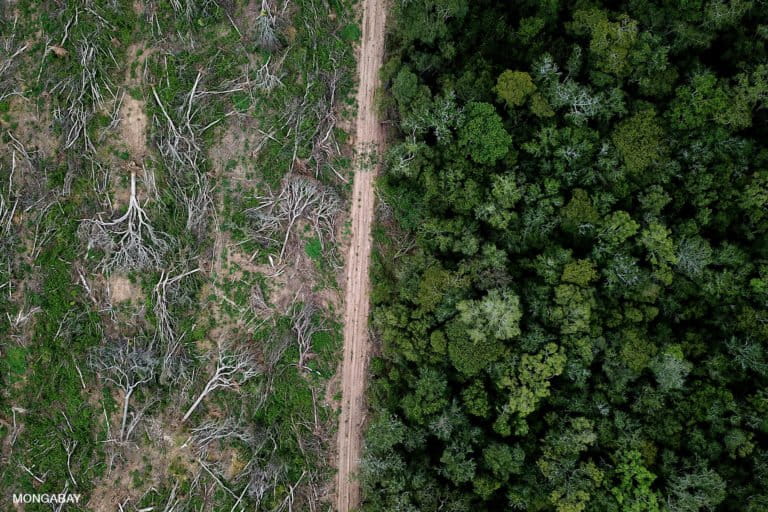
We can learn much more about using the forest sustainably through collaboration with the indigenous peoples. There are many products in addition to Brazil nuts that could be sustainably harvested from the forest.
Mongabay: What would you say to young people who are distressed about the current trajectory of the planet?
Prance: Firstly, I would apologize for the great mess that my generation has made to the environment, you have every right to be distressed.
Please keep up the pressure on governments and individual citizens. Be fearless in your actions because your future depends on this.
Get a good training in your chosen field, because people from almost all disciplines can do something to help the environment.
Above all persist and do not give up hope or there will be no future for humankind.